Disclosure: In any review for a product or service, products or compensation may have been provided to me to help facilitate my review. All opinions are my own and honest. I am disclosing this in accordance with FTC Guidelines. Please see “Disclose” and "Terms of Use" tabs for more information.
Have you ever gone scalloping? Personally, I had not, until this year in Gulf County, Florida. I wasn’t even sure what the act of “scalloping” was. Yes, getting scallops, surely, but how? And what did that entail? It turns out, it’s both fairly simple, and not as easy as you would expect.
One basically needs to get to a body of water that contains these mollusks, which are both mild in flavor and extremely healthy for you. You can charter a boat, get on a kayak, or find a company that does scalloping tours. If you head out without a guide or boat captain, you will need a Florida saltwater fishing license, a mesh bag, and a dive flag. Get your license ahead of time online or head to the experts at Bluewater Outriggers. They can get you a license, supplies, tell you the local hot spots, and tips on how to find scallops.
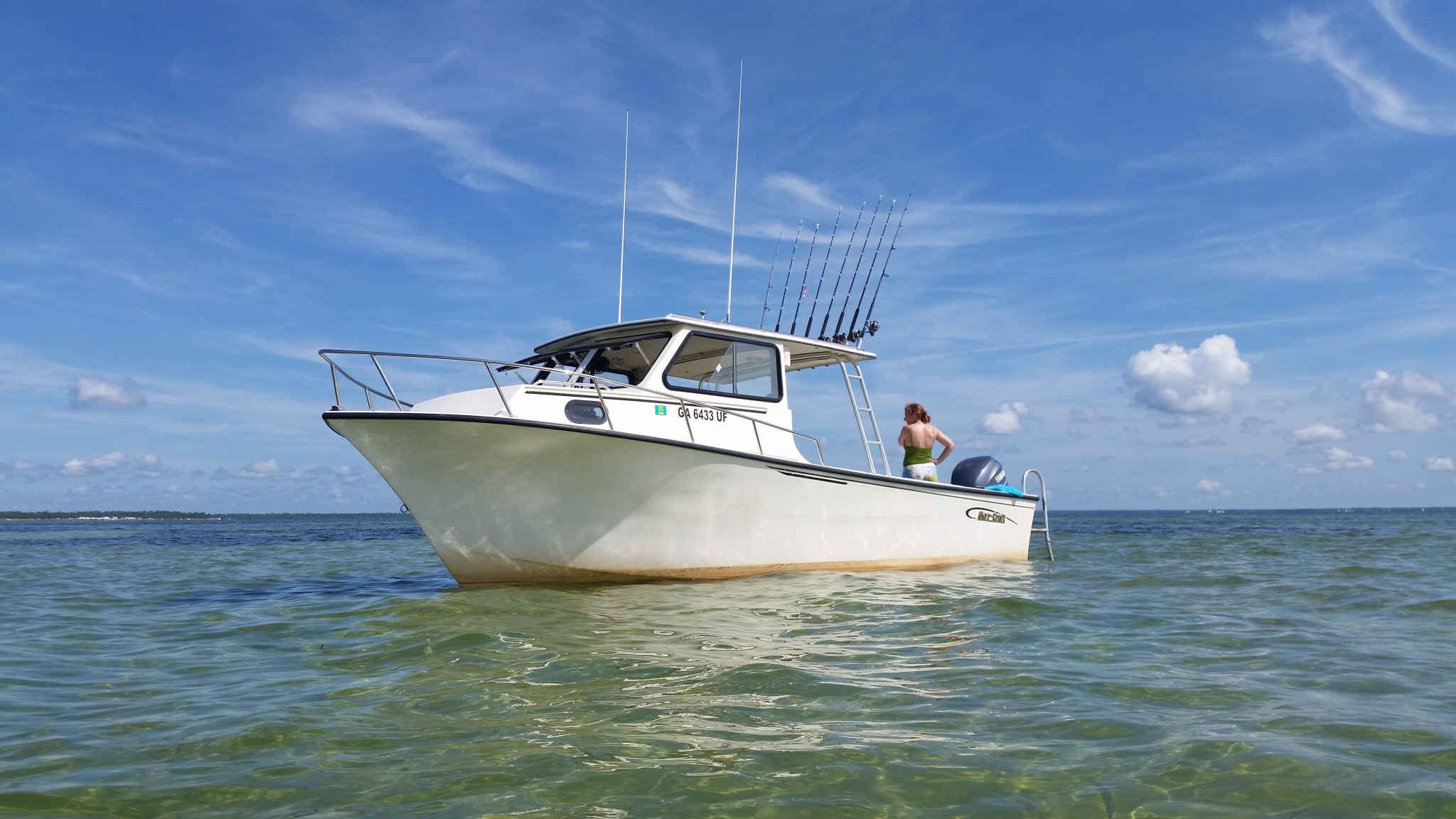
We first tried our hand on the Break-a-Way Charters boats, owned and operated by the father and son team of Captain Bobby and Captain Wade Guilford as well as Captain George Lautt. The boat tour we were looking to go on revolved around scalloping, but we ended up doing more then that. The first stop where we tried for scallops came up empty handed, but we were able to go shelling along the beaches of Port St. Joe and St. Joseph’s Bay.

The shelling could easily have been the highlight of my day- it was peaceful, quiet, and something you could do either by yourself or with someone else. I headed out for some alone time, enjoying the solitude while seeking out shells on the beaches. The guides were able to identify the shells when we returned- what type they were, what lived in them, and other interesting shell-related information.
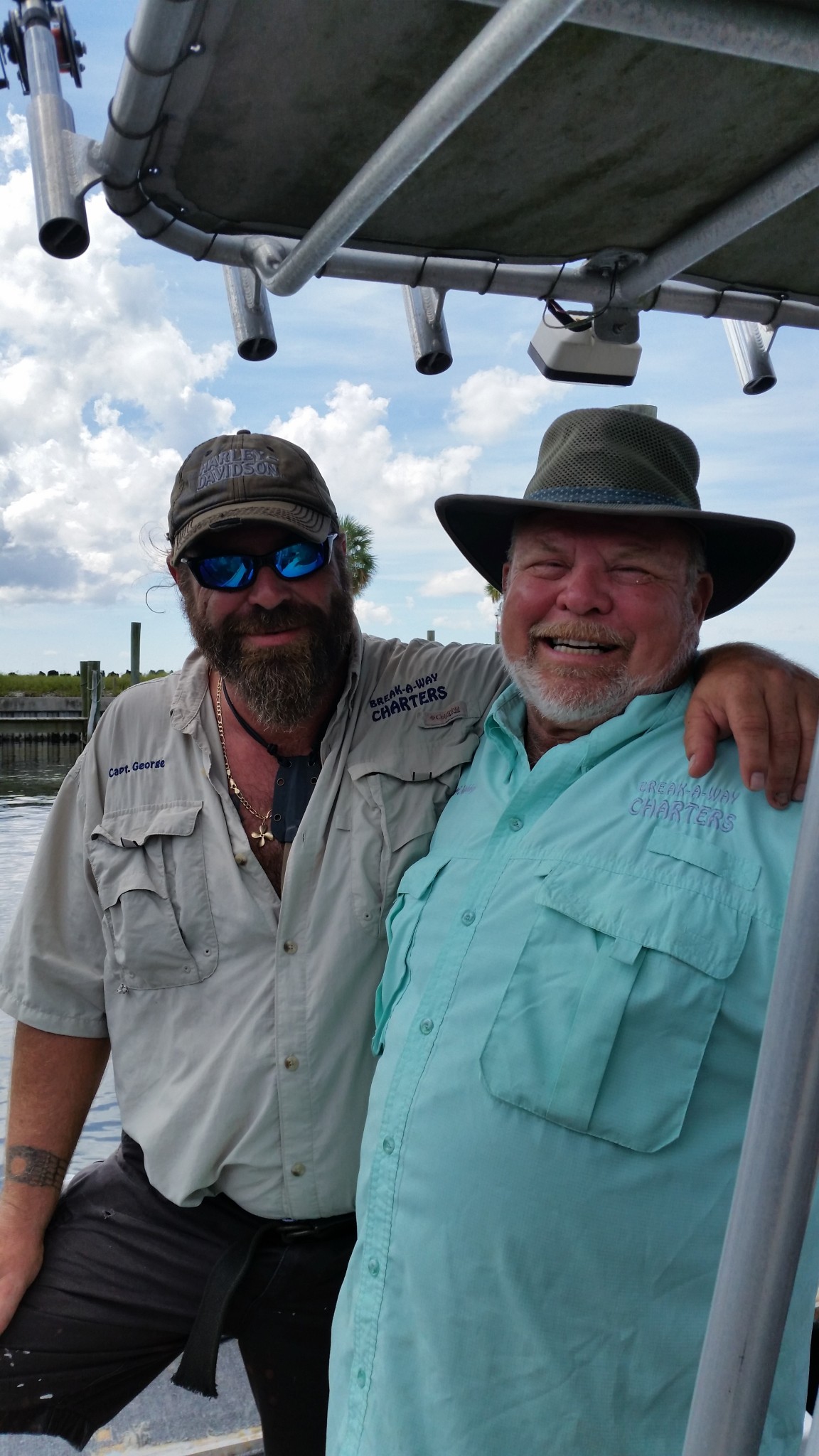
Break-a-Way Charters offers inshore & offshore fishing, shelling, sightseeing, scalloping and are the only locals able to provide“snuba” trips. What is snuba? Part snorkeling, part scuba “diving”, snuba allows you to dive into the water with air but without the tank, so no special certification is needed.
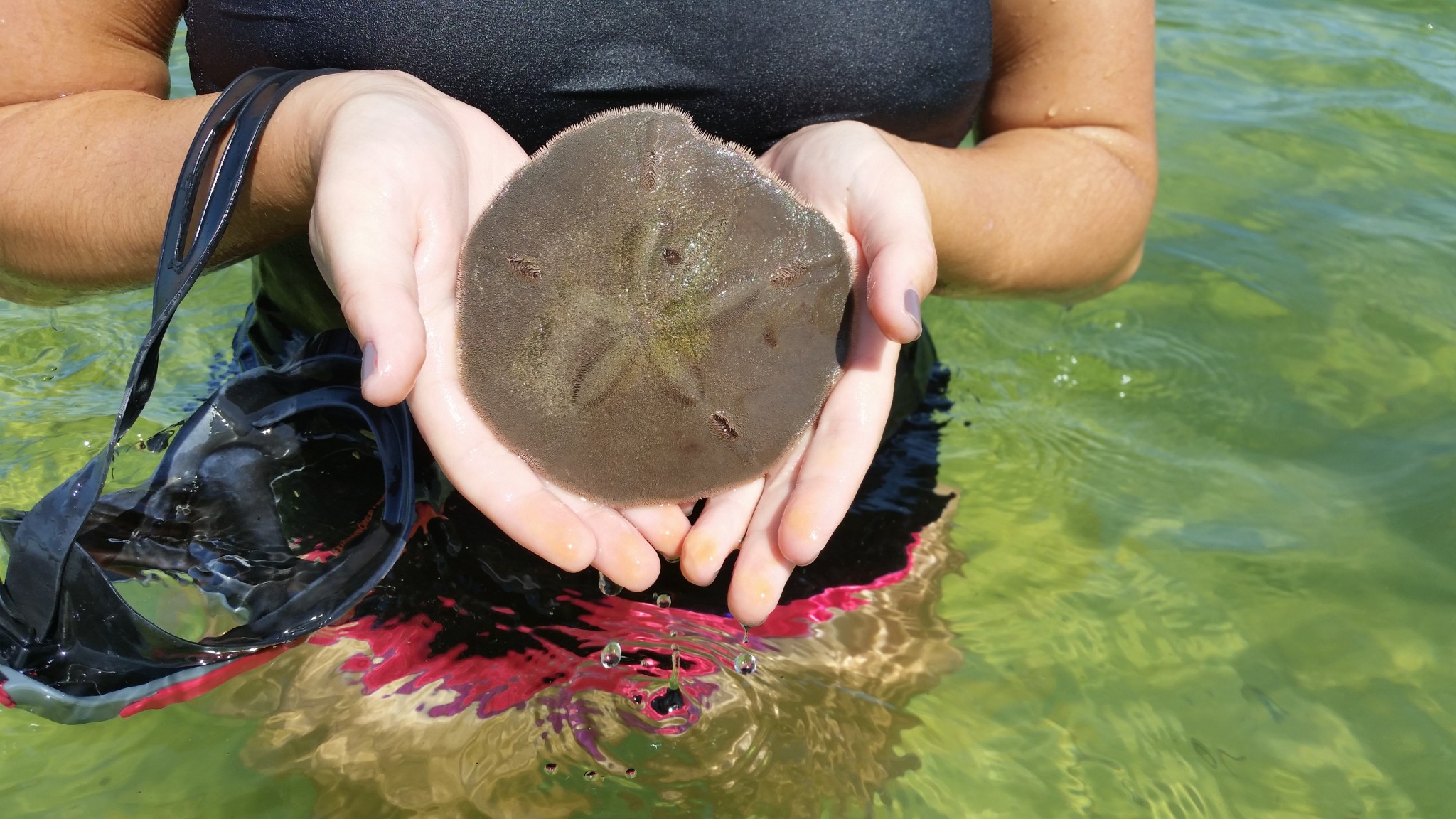
We headed back onto the boat with our newly found treasures to try another location for scallops. We found all sorts of shellfish, interesting shells, sand dollars, starfish, and more- but no scallops. The clear, warm water however made for a perfect place to swim and lounge about; no one was in a rush to go try another spot.
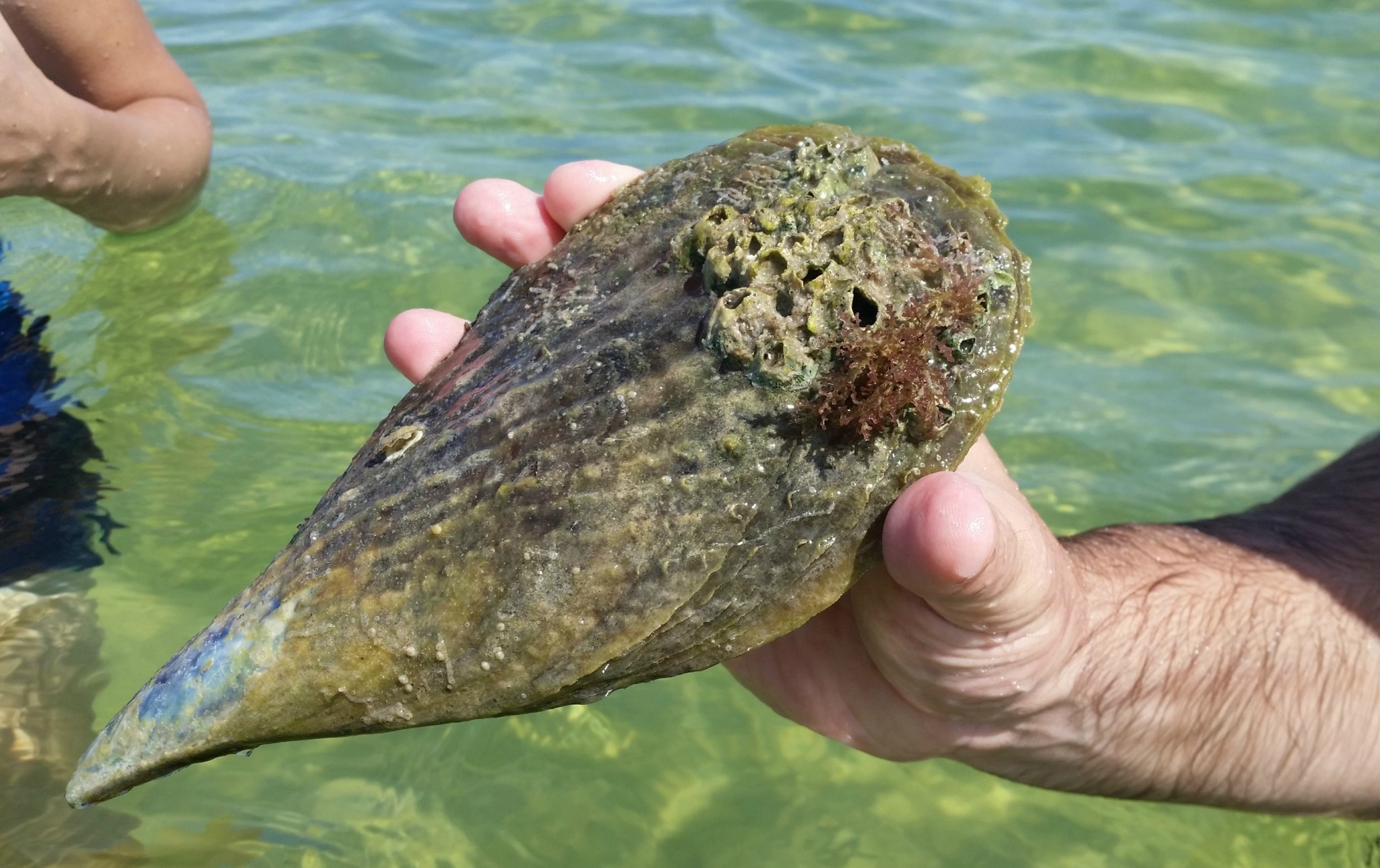
We decided to head to lunch, and taste the scallops that had been eluding us instead. At Indian Pass Raw Bar, they continued to be evasive, but the food was so amazing that we didn’t mind. If you didn’t know any better, you’d be tempted to pass what looks like some “hole in the wall” convenience store looking building. Looks can be deceiving. Once inside, seat yourself and grab a drink from one of the “coolers”. Decide what you want by checking it off of a “ticket” and handing it in- the staff will bring your choices to you when ready. The menu is on the smaller side, but the food is amazing, offering barbeque, stuffed shrimp, and melt-in-your-mouth parmesan baked oysters that will convert many who swore off the sometimes off-putting shellfish. This friendly and unassuming restaurant is come-as-you-are, flip flops and shorts, and operates on an honor system (yes, really). Located in a corner of Florida’s Forgotten Coast, the food and staff are anything but forgettable, and you will find yourself planning another visit to this local favorite into your schedule.

Back to our mission- scallops. We find that we have arrived late in the season and will have slim pickings, which was much to our dismay. Not to let that deter us, we thought we would try our luck on a guided scallop fishing kayaking trip in St. Joe Bay. As none of our group had ever successfully scalloped before, we thought a guide would do us well, being able to show us the best spots to hunt and show us how to shuck those often stubborn shells. We hopped into kayaks, and slid into the warm waters of the bay. Happy Ours tours gave us more then just a kayak trip around the bay, they pointed out the marine life that was abundant around us. Not just a nature tour, but a hands on experience, we interacted with sea stars, mullet, sting rays, sea horses- and scallops. Yes, scallops! Finally, we found them.
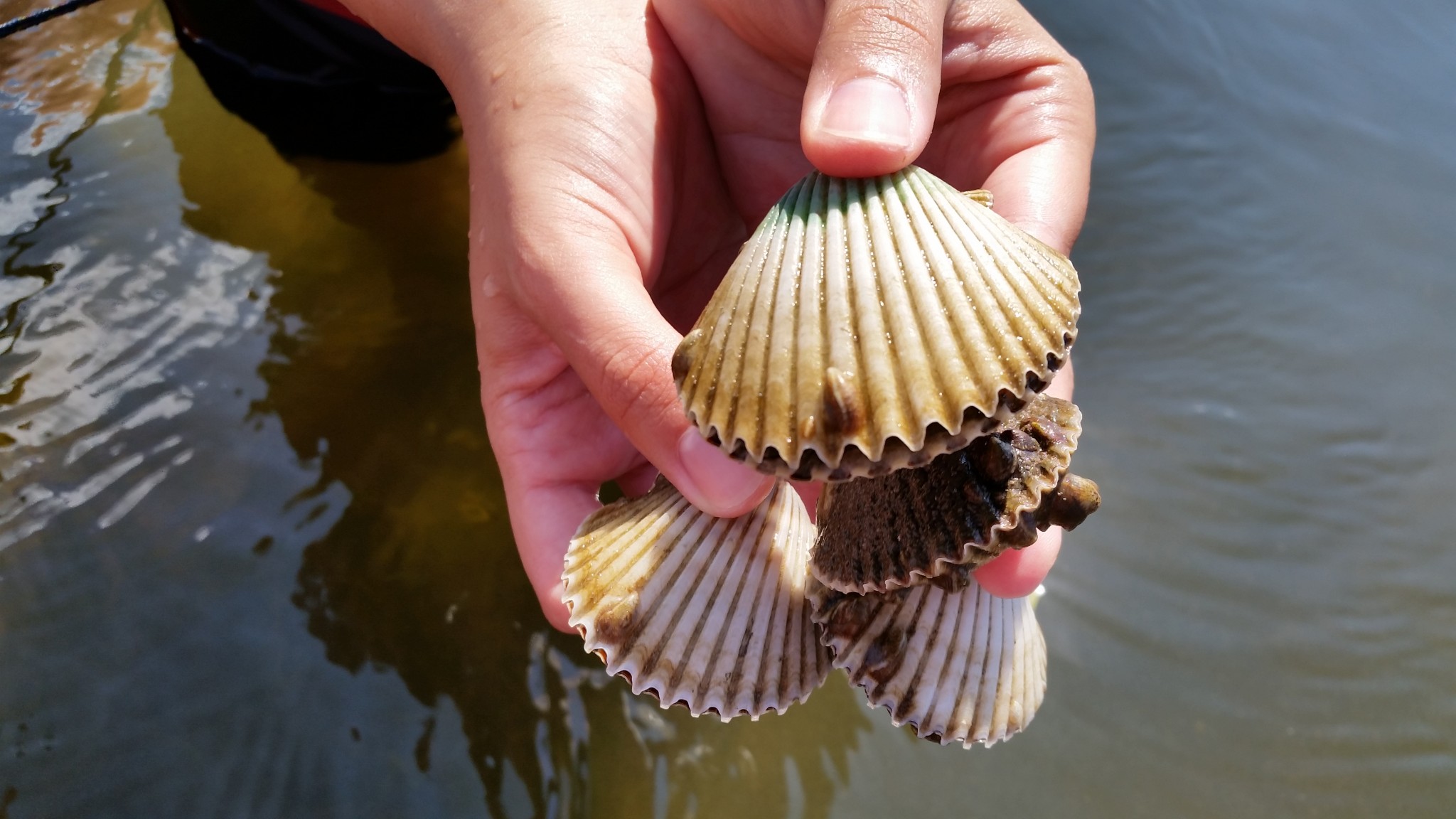
In the long sea grass of St. Joe Bay, we found what we traveled all the way to Florida for- the apparently elusive in September scallop. Our guide chose an area she thought might have them, and there were none. Turns out that the second time is the charm, because we found about 20 between the 5 of us. There is a knack to finding them, I’m told- you see the “blue eyes” of the scallop’s outer edge or rim in the shallow water, then reach down and scoop them up. My was was less sophisticated, but worked just as well- I gently felt along the bottom of the sandy floor with my toes until I felt a whole shell, then I picked up what “felt” like the right shape. Being a beginner, I was not able to see the eyes, and the shells all looked the same to me in the water. The toes know, and I found 4, which thrilled me! We were not allowed to keep them, as the guide felt that the scallop population in that area had grown to thin and these were better left to create future generations. No matter- we had found them. We also know better- next year, come much earlier in the season for the most plentiful pickings.
This information from Happy Ours and the Florida Fish and Wildlife Commission will be helpful to you when planning your scalloping trip- “The harvest season opens June 27, 2015 and closes on September 25. A recreational saltwater fishing license is required for anyone 16 and over (some exceptions apply) who plans to collect scallops. Harvesters are limited to two gallons of whole bay scallops in the shell, or one pint of bay scallop meat, per day during the open season. Bay scallops may be harvested only by hand or with a landing or dip net. More information can be found online at http://www.myfwc.com/fishing/saltwater/recreational/bay-scallops/.”
For tips on shucking your catch or recipes on eating your catch, and to plan your trip, visit the GCFL website.
Learn more about this “no worry, no hurry” destination at http://www.visitgulf.com and on Facebook, Twitter and Pinterest.
















Well this looks like quite the adventure, i would love to go snuba, interesting name to call it, never heard about it until i read your post. I love being round and in the water, especially in the warmer months, we love going to the lakes and beaches.
Can you believe I have never been? Thank you for letting me see through your eyes. Absolutely beautiful.
Okay I have to admit I had no idea what scallops looked like before seeing them here. So never went scalloping. This would be interesting to do indeed. Thanks for sharing.
So never went scalloping. This would be interesting to do indeed. Thanks for sharing.
That is awesome. We are always off the coast of Maine and have never seen a sand dollar that big or any of your other treasures. Looks like a terrific day.
Looks like you had a blast!! We love gulf seafood and a fishing trip is definitely something we enjoy doing.
What an amazing place that seems to be. I can’t believe how fabulous the sea life is!
That looks like so much fun. I love fishing and crabbing and seining.
Although I wouldn’t mind just hanging out in that blue clear water I will leave the scalloping to others!! I happen to love to eat shell fish–all shell fish–but I will get them in a restaurant thank you very much!
Four’s a great start for a beginner, probably a lot more than I would fine. Sounds like a great trip.
that sounds like a blast- and the food looks delicious also